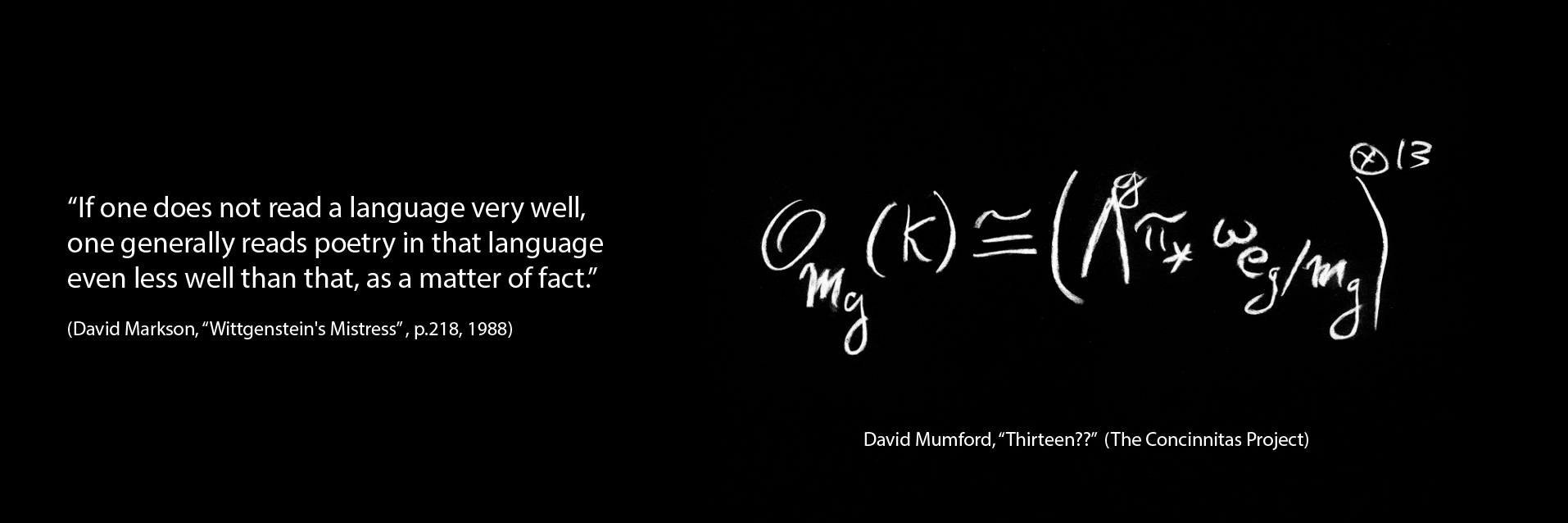
Development of rule-based modeling methodologies
In physics, an understanding, however incomplete, of some key aspect of a system generally precedes modeling. The situation is more convoluted in systems biology, as no amount of staring at any of its iconic interaction hairballs might bring about that initial understanding. Modeling, then, may have to precede understanding in order to bootstrap it. The criteria that establish a good model in physics — insight, elegance, conciseness, fruitfulness — are not available in that case. Rather, we require that a good model be at least one that is a transparent, formal and executable representation of the facts it rests upon. The drawback is that once we have achieved such a model, and despite knowing all its ingredients, we still need to rationalize its behavior. A model consisting of a large number of interactions is like an empirical object in its own right. Given an infrastructure for producing models of this kind, the theoretical and computational challenge becomes one of extracting explanations (on the basis of which the model might be simplified).
We helped define and implement a rule-based approach to making such models. Empirical characterizations of interaction capabilities of proteins are expressed as abstract rules in a formal language that hides the microscopic details justifying them, much like the symbolic representation used in chemistry.
The rule-based approach consists of:
- The definition of a formal language with a clear operational semantics for representing biochemical and biophysical aspects of interaction at a pragmatic level of abstraction;
- The implementation of mathematically sound and scalable tools for analyzing and executing arbitrary collections of interaction statements;
- Computational protocols for constructing a corpus of formalized interaction statements from the content of extant databases and the literature;
- The deployment of such corpora, models, and supporting tools as web services.
The Kappa language is an attempt in this direction. It is developed and implemented in partnership with theoretical computer scientists, software developers, and visualizers. Our software package PyKappa facilitates simulation and analysis of Kappa-language models in Python.
Applications of rule-based modeling
Signaling. We apply Kappa to study combinatorial complexity of scaffolding in signaling, specifically in the Wnt system. This effort also triggered an interest in the statistical mechanics of assembly equilibria.
Non-equilibrium thermodynamics. Models of large signaling systems are often focused on dynamical phenomena without regard to energetic costs. In making such models one seeks consistency with knowledge about mechanisms but not thermodynamics. We are exploring the extent to which Kappa is a useful platform for computational experiments concerned with non-equilibrium thermodynamics and statistical mechanics.
Organic chemistry. The formalism of Kappa is inspired by chemistry but was developed with molecular biology in mind, where "atoms" are proteins and "molecules" are complexes of proteins. In collaboration with the architects of Mød — a graph-rewrite formalism tailored for organic chemistry — we are exploring how to extend the analysis of causality developed in the context of Kappa to systems chemistry.
Evolvability. Evolution is fueled by heritable variation and propelled by natural selection, to the extent that selection can discriminate among variants. Yet, there is a sense that answering the question about the causes of evolution is different from answering the question about what causes the outcomes of evolution. The latter is about why living systems are the way they are, not why they won a competition. Mutations are random, but their phenotypic consequences are not, and so we need to know how mutations map into phenotypes. The reductionist triumphs of biophysics, biochemistry, and molecular biology have put us in a position to revisit these questions more forcefully. In past work, we uncovered a connection between plasticity (roughly, the environmentally induced change of phenotype at constant genotype) and variability (roughly, the mutational change of phenotype at constant environment) in the special case of RNA secondary structure models. A similar connection has also been hypothesized for developmental processes. It may ultimately correspond to a general insight from the theory of dynamical systems, that those directions an attractor (a stable dynamical configuration) moves most in when parameters are varied (analogous to “genetic variability”) correlate with the directions that are softest with respect to perturbations of the dynamical variables (analogous to “plasticity”). We are investigating how Kappa models could be used to revisit these old questions in new ways.
Aging
In past work, our lab discovered that the mortality statistics of C. elegans responds to an overwhelming number of physical, chemical and genetic interventions simply by a rescaling of time, leaving the shape of lifespan distributions invariant. This observation suggests the existence of a phenomenological description of aging, i.e. a simple equation that describes how a macroscopic state variable characterizing the resilience of an organism changes (stochastically) with time. We are interested in models that depict an organism as a network of dependencies at some lower level and from which we can derive the empirically observed regularity at a higher level upon perturbation of network parameters and structure. This takes us in the direction of reliability theory.
